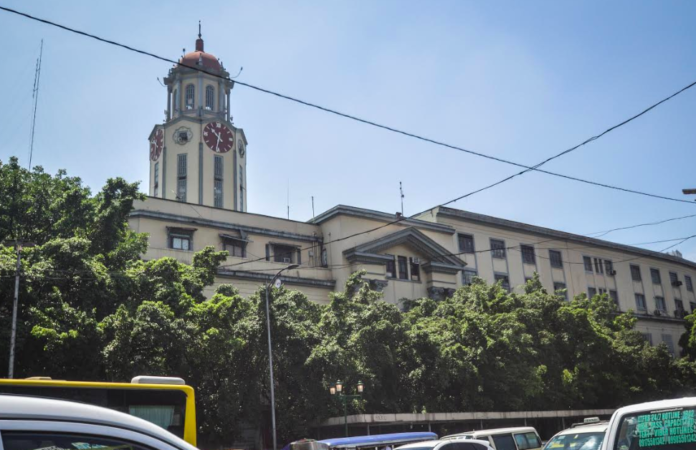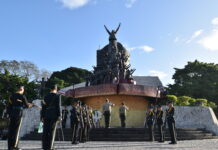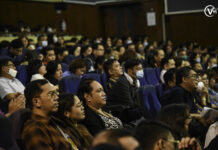EXPERTS weighed in on Manila Mayor Joseph “Erap” Estrada’s performance in his second term, as he eyes the mayoral post anew in the upcoming elections.
Estrada, a former president and a convicted plunderer, was first elected Manila mayor in 2013, three years after he placed second in the 2010 presidential election.
Estrada acted on a 10-point agenda upon his re-election in 2016. His plan strived to focus on peace and order, health, housing, transportation and traffic, cleanliness, education, sports, governance, transparency and people’s participation.
With the 2019 elections for local and national positions less than a week from now, the Varsitarian took a closer look at Manila has become under Estrada’s second term as mayor of Manila.
Peace and order
Dennis Coronacion, UST Political Science department chairman, said Estrada’s preventive measures to support peace and order did not have a concrete and clear goal.
“What’s lacking is a clear program that… the police could identify themselves, halimbawa ‘pag sinabi mong [operation] police visibility,” Coronacion said in an interview. “You would see to it na during their duty, lalabas sila ng mga opisina at magpapatrol, wala siyang ganon e.”
He added that Estrada only took small steps like focusing on the welfare of the police force and giving them their long-delayed allowances to motivate them to perform their jobs.
In 2018, Estrada returned P136 million worth of allowances that were not given to Manila Police District (MPD) members prior to his administration. He also procured 41 new mobile patrol cars and 110 electric personal transporters for patrol.
“Perhaps the premise of his action was to increase the salary [and] allowances, and to give out the long-delayed allowances of the police force,” he said.
“Those were his small steps but as to whether it has resulted in the decrease of [crime] or not, it seems like it is not conclusive.”
A report by the National Capital Region Police Office last year showed that index crimes in Manila dropped from 3,786 in 2017 to 2,682. Index crimes are committed against a person such as murder, homicide, physical injury and rape. It also covers crimes against property such as robbery and theft.
Coronacion said there was no correlation between the crime drop and Estrada’s actions.
Edwin Martin, a political science professor in the UST Faculty of Arts and Letters, said Estrada did not have tangible projects or campaigns for peace and order, as he merely implemented national policies.
“Kung gusto niyang ma-implement ang peace and order sa Manila, maglagay rin siya ng enforcers na gaya ng [Makati Public Safety Department]. These are the front liners na under ng jurisdiction ng local government,” he said.
“If there is a decline in crime rate in 2018, perhaps it is not because of the city of Manila or it is not the mayor but the national policies regarding that, sumunod lang sila,” he added.
Data from the Philippine Statistics Authority (PSA) showed that poverty incidence rate in Manila in 2017 was at 5.17 percent, the highest in the National Capital Region.
The PSA also recorded an estimated 82,000 families in the capital city whose annual capita per income falls below the poverty threshold.
Reclamations
Estrada approved four multi-billion-peso reclamation projects in Manila Bay in his second term. The man-made islands are touted to generate jobs, revenue and businesses for the city’s residents.
Political analyst Ramon Casiple however warned of the environmental implications of carrying out these ambitious projects.
“There will be more pollution, as waters from inland flows more slowly to Manila Bay, aside from huge amounts of pollution by enterprises in the reclaimed areas,” he said in an interview.
Casiple added that reclamation could cause more flooding in Manila due to rising seawater with the subsidence of land in Tondo and Binondo. He also raised the possibility of water shortages due to the tapping of water supply for the reclaimed areas.
Froilan Calilung, who also teaches at the Faculty of Arts and Letters, cited the risks posed by reclamation on the bay’s biodiversity.
“There are mangrove areas that will be affected, not to mention the possibility of flooding, sedimentation, garbage and wastes, which are serious issues related to reclamation,” he said.
Data from the Philippine Reclamation Authority showed that as of 2019, there are 22 reclamation projects in the Manila Bay, three of which are still waiting for the local government’s go signal.
Casiple also said the reclamation projects could be a source of corruption. “It would also violate the constitutional provision on reclaimed areas as exclusive property of the government and for the use of the public, not private interests,” he said.
UST Simbahayan Director Mark Anthony Abenir said livelihood for the people who reside along Manila Bay would be a problem because they would have to be relocated.
As a result of the reclamation efforts, at least 40,000 families around Manila Bay will have to be ejected.
Martin said Estrada, together with the Department of the Interior and Local Government, should be consistent in imposing sanctions on villages that allow informal settlements.
“Siguro mas magiging effective siya kapag ginagawa mo siya… hindi seasonal lang kung dadating ‘yong Pope, ‘pag dadating ‘yong prime minister or president ng anong bansa… it has to be something regular,” he said.
In 2018, Estrada implemented the “Land for Landless Program,” where the city government purchased lands where urban poor families settled to avoid relocating them to the provinces.
Traffic, transportation
Among Estrada’s goals in the city were to develop the Pasig River as an additional means of transportation in the capital, to regulate areas where street vendors could do their business and to impose a “No Parking Policy” on the streets of Manila.
In 2016, Estrada implemented a “Zero Vending Policy,” which prohibited vendors on major roads of Manila.
Martin noted that these programs were short-lived. He said Estrada and the villages should be serious in clearing the sidewalks of vendors to ease traffic flow.
“They should be really strict about it, not only sidewalk vendors, pati rin ‘yong mga bahay na nakaprotrude na ‘yung garahe nila sa kalsada,” he said.
Estrada has claimed that traffic in Manila was reduced by 50 percent in 2017 because of his “Pook Kaayusan” or traffic discipline zones.
However, the Boston Consulting Group found in a 2017 survey that Metro Manila had the third worst traffic situation in Southeast Asia.
Coronacion said only the implementation of a truck ban, specifically on Roxas Boulevard, had a major impact.
“Ang na-experience ko na sa [Roxas], itong mga trucks na ‘to they’re allowed to use single lane, so far ‘yon ‘yong visible pero as for the others, nothing has changed,” he said.
In 2014, Estrada implemented a truck ban ordinance in Manila to prohibit trucks from travelling from 5 a.m. to 9 p.m. from Monday to Saturday. However, the ban was lifted later that year.
Two years later, Estrada sought to revive the truck ban to ease traffic not only in the city but also in Metro Manila.
For Martin, Estrada’s 10-point agenda left many things unanswered. He described Estrada’s term as “mediocre,” offering nothing new nor innovative in Manila.
“If it’s the same platform of government now that he’s running for re-election, talo siya dun, kung naiintidihan ng tao ‘yon,” he said.
Manila’s political arena
In the mayoral race alone, there are eight candidates vying for the position, including Estrada. The 82-year old is running against former leaders of the capital: Alfredo Lim, who had served two terms as mayor and Isko Moreno, who had served as vice mayor for two terms as well.
Other candidates for the mayoral race are Francis Villegas of Pederalismo ng Dugong Dakilang Samahan, and independent bets Onofre Abad, Francisco Pizzara, Benjamin Rivera and Cecilia Salvador.
Seven bets are running for vice mayor, including the incumbent Ma. Sheilah “Honey” Lacuna-Pangan and former Manila congressman Amado Bagatsing. Fifteen candidates are vying for to represent the capital city in Congress as representatives of Manila’s six districts.
In the city council, most of the candidates vying for positions come from Estrada’s Pwersa ng Masang Pilipino, Moreno’s Asenso Manileño and Lim’s PDP-Laban.
In 2016, the capital’s total voting population was estimated at 975,000, more than half of its 1.78-million population in the same year.

















